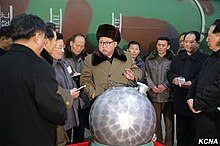A Brief History
On August 6, 1945, the American Boeing B-29 Superfortress named Enola Gay dropped an atomic bomb on the Japanese city of Hiroshima, killing about 70,000 people right away and perhaps a few tens of thousands later from wounds, burns, and radiation. Ever since this first use of a nuclear weapon against living, human targets the specter of possible nuclear war has hung over the world, casting a pall on humanity. Created by Bulletin of the Atomic Scientists’ Science and Security Board in 1947, the Doomsday Clock (https://thebulletin.org/2018-doomsday-clock-statement/) was invented as a way to chart the ongoing threat of possible nuclear war. As this article was prepared, the clock read an ominous 2 minutes to midnight! (Note: As of July 26, 2020, the clock is set at 100 seconds to midnight, close indeed! And by the way, one of our readers recently requested we write an article about the Doomsday Clock, so there you go!)
Digging Deeper
The keepers of the Doomsday Clock keep track of how many nations have nuclear weapons and the events in the world that may lead to the use of such weapons. Bellicose rhetoric from world leaders, especially those that actually have nuclear weapons (such as North Korea’s Kim Jong-un or President Donald Trump of the United States) is a factor in increased tensions that result in the clock being moved closer to “midnight,” meaning closer to the possibility of actual nuclear war. Events in the news that indicate a country or countries may take preemptive action against another nation that is trying to develop nuclear weapons (such as a potential attack on Iran by the United States or Israel) create other situations that could provoke nuclear war.

Starting in 2007, the Doomsday Clock was modified to also take into account other factors that could severely affect mankind in a negative way, such as climate change, though the main purpose of the clock remains to indicate the current danger of nuclear war. Politics, diplomacy, the level of the terrorist threat, natural threats (such as an asteroid striking the Earth), and other sorts of potential disasters are taken into account. Even the potential of artificial intelligence run amok (such as in the Terminator movies) can be factored in. The board meets twice each year to debate the setting of the clock. A notable lapse was the Cuban Missile Crisis in 1962 when the US and USSR came so close to nuclear war, and the situation was defused before the clock could be reset!
Originally “set” at 7 minutes to “midnight,” the clock is currently at 2 minutes to midnight (as of 2018, in 2020 the clock has been reset to 100 seconds to midnight), a statement about the state of world politics today, including tensions with China, Russia, the US and Iran among others. The US pulling out of the Iran denuclearization treaty certainly did not help! Other reasons put forward for the dire status of the clock setting include the refusal of the US to recognize and join efforts to reduce climate change and the abdication of the United States of the leadership of the so called “Free World” of Western democracies. The rise of China as an economic and military power and the belligerence of Russia, coupled with a nationalistic fervor in the US have all contributed to the increased danger of Earth shattering events, such as nuclear war. The Covid-19 pandemic of 2020 certainly does not help the situation the world finds itself in. Over the years, the clock has had its setting changed only 23 times, with the closest to midnight setting being 2 minutes until midnight, in 1953 and again in 2018, until of course our present tense times. The fact that 2018-2020 reflects the greatest perceived danger of nuclear war is disturbing, to say the least. The “safest” setting of the Doomsday Clock came in 1991 when the Soviet Union dissolved, and the end of the Cold War was marked. This high-water mark was expressed as 17 minutes to midnight.

The inventors of the Doomsday Clock were a group of scientists that had worked on the Atom Bomb project for the United States (Manhattan Project), calling themselves “Chicago Atomic Scientists.” These scientists developed a newsletter that was later published in magazine form called the Bulletin of the Atomic Scientists. On the cover of each issue is displayed a picture of the Doomsday Clock. The first appearance of the Doomsday Clock was on the cover of the June 1947 issue of the Bulletin of the Atomic Scientists.
Of course, not all pundits and scientists, let alone politicians, agree with the decisions made as to the setting placed on the Doomsday Clock. Certainly the decision on what time to set the clock at is subjective. Question for students (and subscribers): That being said, what “time” do you think the Doomsday Clock should be set at in 2018? Feel free to explain your choice of setting in the comments section below this article.

If you liked this article and would like to receive notification of new articles, please feel welcome to subscribe to History and Headlines by liking us on Facebook and becoming one of our patrons!
Your readership is much appreciated!
Historical Evidence
For more information, please see…
Hersey, John. Hiroshima. Blurb, 2018.
Rosenbaum, Ron. How the End Begins: The Road to a Nuclear World War III. Simon & Schuster, 2012.
The featured image in this article, a photograph by U.S. Navy Public Affairs Resources Website of Hiroshima in the aftermath of the bombing, is a work of a U.S. Air Force Airman or employee, taken or made as part of that person’s official duties. As a work of the U.S. federal government, the image or file is in the public domain in the United States.
You can also watch a video version of this article on YouTube:


